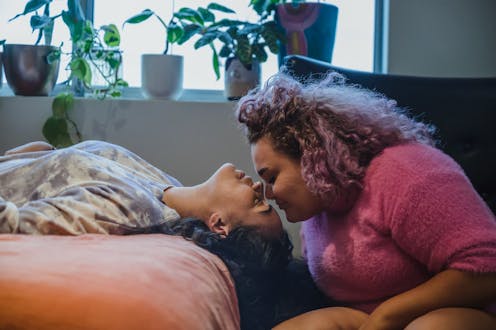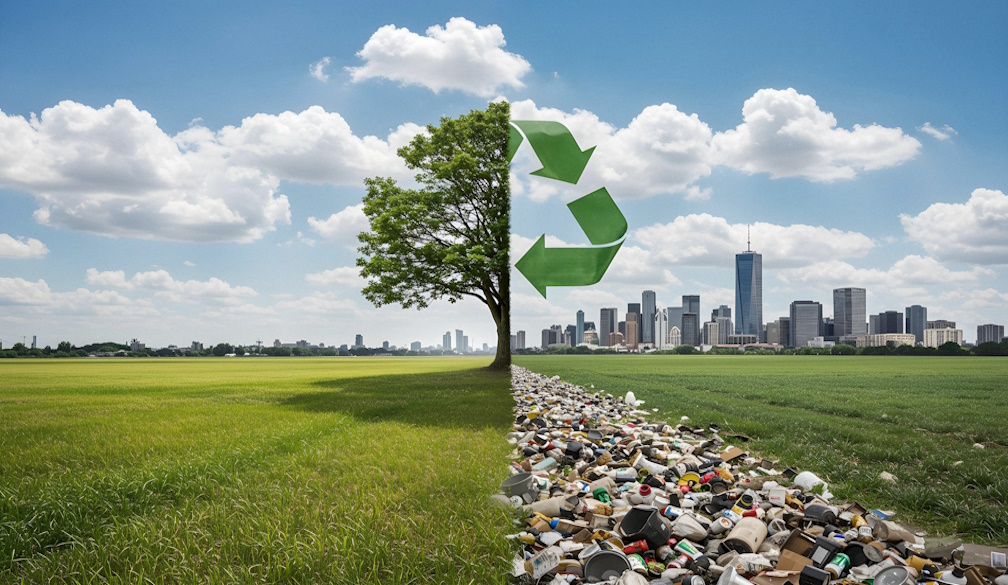Consent education needs Blak voices for the safety and well-being of young First Nations people
- Written by Amanda Sibosado, Research Associate - Aboriginal Mental Health, Curtin University

Readers are advised that the following article contains mentions of sexual assault.
The Teach Us Consent[1] movement - founded by Chanel Contos in 2021 - has gained bipartisan political support to mandate consent education in Australian schools from 2023. The movement was rapidly successful after collecting over 6,600 stories[2] of people who had experienced sexual assault by someone when they were at school.
This was followed quickly by the federal government committing $189 million[3] over five years to strengthen prevention and early intervention efforts in family, domestic and sexual violence.
Consent isn’t just about sex[4]. Consent needs to be taught in the context of our rights to say no to anything we’re not comfortable with. That education needs to start early, hence why the proposed curriculum is from school years K-12.
Teach Us Consent has advocated for comprehensive consent education that moves beyond simply teaching the law or explaining that “no means no”. Consent in a sexual context includes - but is not limited to - respect, healthy relationships, gender stereotypes, ethics, communication and empathy.
As strong and emotive reactions to recent speeches by Grace Tame and Brittany Higgins[5] show, issues of sexual violence and consent are gaining momentum at a national level. Yet, within these important discussions, the voices, experiences and needs of First Nations people are not widely represented or heard.
Drawing on the current momentum and interest in consent education, there is an opportunity to fund place-based, culturally appropriate and co-designed consent education with First Nations young people.
The response to sexual violence must move beyond simply adding “dot paintings” to mainstream curricula to address the conditions that make sexual violence an issue for many.
To have a real impact on young people and our communities, we need to be telling the whole story of women, gender and sexual violence in Aboriginal and Torres Strait Islander people’s lives against the backdrop of colonisation.
Read more: Friday essay: 'fair game', racial shame and the women who demanded more[6]
Acknowledging the impacts of colonisation
Before colonisation, our diverse cultures were grounded in collective rights and responsibilities for people[7] and Country.
Women were keepers of knowledge[8] and Lore, and were responsible for passing knowledges down through our kinship lines. This involved educating and nurturing young girls as they transitioned into adulthood.
There were laws that regulated behaviours – sexual and otherwise – and women were revered in their roles as Elders, mothers and healers.
However, when Australia was colonised, Aboriginal women’s roles as teachers and matriarchs were rendered invisible[9] by the colonisers’ gaze, guns and violence.
When children were taken and family members murdered, this led to families and communities being displaced, and their cultural roles disrupted. Australia’s assimilation policies[10] laid the foundation for the entrenched racism and displacement we experience today[11].
This has contributed to First Nations people’s ongoing experience with inequalities in social and health indicators - including sexual and other violence[12].
The ongoing impact of colonisation, racism and cultural loss[13] are key drivers of violence in First Nations communities. This needs to be understood and addressed if our experiences are to be genuinely included in the national narrative around sexual consent and violence.
Growing relationships with First Nations people, communities and organisations based on genuine respect and cultural strength is fundamental to developing culturally safe education around consent.
Read more: Mandatory consent education is a huge win for Australia – but consent is just one small part of navigating relationships[15]
Culturally secure co-design for consent curricula
Our Watch[16] – a national leader in the primary prevention of violence against women and children in Australia - has worked closely with First Nations people to develop Changing the Picture[17]. This is a resource to support the prevention of violence against Aboriginal and Torres Strait Islander women and children.
A co-design process would complement and build on the good work of Our Watch and those programs highlighted through this resource. It would draw on the professional and lived experiences of staff and communities working in this space.
Ways to approach consent education will vary depending on cultural, historical and local differences. Our communities need a curriculum that is flexible and adaptable enough to honour these diverse local and cultural needs.
To achieve this, collaboration must occur at all levels and stages of the design, rollout and evaluation of the new consent curriculum.
There has been further commitment[18] to fund responses beyond the national curriculum development, but there must be targeted funding for First Nations to ensure the responses are culturally appropriate.
Read more: 'We are a nation of jailers': Jurrungu Ngan-ga is a whirlwind of bodily resistance[19]
Making decisions “with” people instead of “for” people
Co-design[20] with First Nations communities and organisations is about all stakeholders - government, experts on sexual violence, community, advocacy bodies, young people and researchers - working together.
A key principle of co-design is that lived experience participants - in this case Aboriginal and Torres Strait Islander people - are valued and respected and their knowledge[21] is privileged.
A good example of culturally secure co-design is the Looking Forward[22] project at Curtin University, in which methods were developed in a collaboration[23] between Elders and young people.
The project includes two key truth-telling[24] activities that build relationships and trust, ensuring the space is culturally secure: Storying and On Country[25].
Storying is the process of sitting as equals and sharing the story of who you are as a person outside your professional role or qualifications. Equally as important is the deep listening and connecting with others in the room through our shared experiences.
Storying is followed by an On Country event. Activities are led, held and weaved together by Elders who share stories and knowledge about Country. This helps to better understand the central role culture has in people’s social and emotional well-being[26] and how to include this in work practices.
Due to the complex legacies of colonisation, the relationships that begin to form through Storying and On Country events are integral in building trust with First Nations people. This enables non-Indigenous people to develop an understanding of culture, kinship and spirit. These activities are part of addressing the racialised power differences and developing a genuine commitment from non-Indigenous people.
This approach forms the foundation for robust discussions[27] that need to occur in the development of any consent education around sexual violence.
These programs may not use the words “consent education”, but they do address the legacy of colonisation that is a driver of sexual violence. Importantly, these examples create culturally safe spaces for all members of the community to engage in conversations about violence against women.
Read more: Increased incarceration of First Nations women is interwoven with the experience of violence and trauma[29]
Walking forward together
The federal government’s move to mandate consent education is a step in the right direction. If funded and resourced appropriately, it provides a unique opportunity to address sexual violence at a national level.
Moving forward, the voices, experiences and expertise of Aboriginal and Torres Strait Islander peoples must be listened to. Historical and current colonial violence, as well as the strengths of culture, must be understood and incorporated.
Engaging with First Nations people working in and for the community is where we need to start.
References
- ^ Teach Us Consent (www.teachusconsent.com)
- ^ 6,600 stories (www.teachusconsent.com)
- ^ federal government committing $189 million (ministers.dss.gov.au)
- ^ just about sex (theconversation.com)
- ^ Grace Tame and Brittany Higgins (www.youtube.com)
- ^ Friday essay: 'fair game', racial shame and the women who demanded more (theconversation.com)
- ^ people (www.austlit.edu.au)
- ^ keepers of knowledge (www.researchgate.net)
- ^ rendered invisible (www.mdpi.com)
- ^ Australia’s assimilation policies (humanrights.gov.au)
- ^ experience today (www.sydney.edu.au)
- ^ including sexual and other violence (www.anrows.org.au)
- ^ racism and cultural loss (www.tandfonline.com)
- ^ shutterstock (www.shutterstock.com)
- ^ Mandatory consent education is a huge win for Australia – but consent is just one small part of navigating relationships (theconversation.com)
- ^ Our Watch (www.ourwatch.org.au)
- ^ Changing the Picture (media-cdn.ourwatch.org.au)
- ^ further commitment (ministers.dss.gov.au)
- ^ 'We are a nation of jailers': Jurrungu Ngan-ga is a whirlwind of bodily resistance (theconversation.com)
- ^ Co-design (www.beyondstickynotes.com)
- ^ knowledge (www.anrows.org.au)
- ^ Looking Forward (debakarn.com)
- ^ collaboration (www.abc.net.au)
- ^ truth-telling (www.tandfonline.com)
- ^ Storying and On Country (youtu.be)
- ^ social and emotional well-being (timhwb.org.au)
- ^ robust discussions (www.tandfonline.com)
- ^ shutterstock (www.shutterstock.com)
- ^ Increased incarceration of First Nations women is interwoven with the experience of violence and trauma (theconversation.com)













